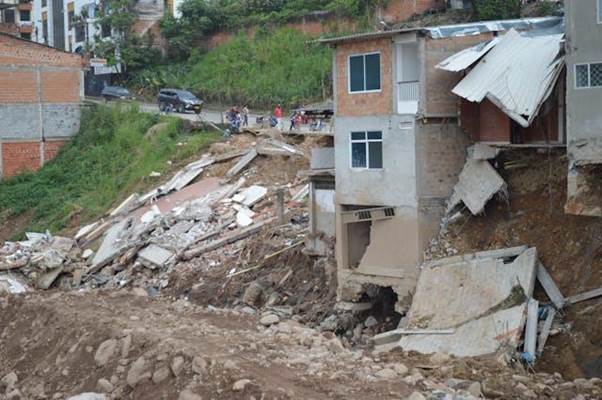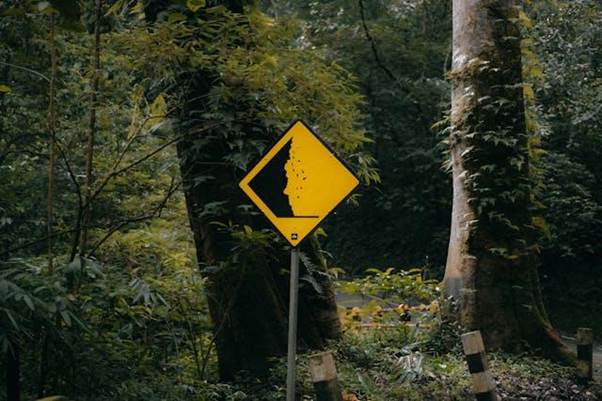Landslides are among the most destructive natural hazards, capable of reshaping landscapes, damaging infrastructure, and endangering human lives.
Table of Contents
The concept of Landslide risk goes beyond the occurrence of landslides themselves; it combines the probability of a landslide happening with the potential consequences. As climate change, rapid urbanization, and deforestation intensify, understanding and addressing this risk becomes a critical global concern.

What is Landslide Risk?
Landslide risk refers to the likelihood of a landslide occurring in a given location and the severity of its potential impacts. Risk is typically assessed by combining hazard (the physical event), exposure (people, property, and infrastructure in harm’s way), and vulnerability (the degree of loss a community may suffer). A region with steep slopes, unstable soils, and high rainfall, for example, will naturally have greater Landslide risk compared to flatter and more stable terrain.
Factors Contributing to Landslide Risk
Several interrelated natural and human-induced factors contribute to Landslide risk:
- Geological Conditions – Weak soils, fractured rock layers, and steep terrain create unstable ground that can easily shift.
- Rainfall and Climate Change – Heavy precipitation saturates soils, reducing stability and triggering slope failures. Climate change increases extreme rainfall events, amplifying Landslide risk worldwide.
- Deforestation – Trees and vegetation stabilize slopes through their root systems. When forests are cleared, the risk of landslides increases dramatically.
- Urban Development – Construction on hillsides and improper land use planning can destabilize slopes, raising Landslide risk in expanding cities.
- Earthquakes and Volcanic Activity – Ground shaking and volcanic eruptions can dislodge unstable material and cause sudden landslides.
Global Hotspots of Landslide Risk
Not all regions face the same level of vulnerability. Some of the world’s most affected areas include:
- South Asia – Countries like Nepal, India, and Bangladesh experience high Landslide risk due to monsoon rains and mountainous terrain.
- South America – The Andes region frequently suffers from landslides caused by heavy rainfall and seismic activity.
- East Asia – China and Japan are particularly vulnerable because of earthquakes, typhoons, and dense populations near mountains.
- North America – The Pacific Northwest in the United States faces significant Landslide risk due to rainfall, steep slopes, and human development.
These hotspots illustrate how geography, climate, and human activity intersect to create varying levels of vulnerability.
Human and Environmental Impacts of Landslides
The consequences of Landslide risk are devastating and far-reaching:
- Loss of Life – Thousands of fatalities occur globally each year due to landslides.
- Damage to Infrastructure – Roads, railways, pipelines, and buildings are often destroyed, disrupting economies and daily life.
- Displacement of Communities – Entire villages may need relocation if Landslide risk remains high in the area.
- Environmental Damage – Landslides strip away vegetation, erode soils, and sometimes block rivers, creating secondary hazards like flooding.
- Economic Costs – The financial burden of landslide recovery, reconstruction, and mitigation can be overwhelming for developing nations.

Assessing Landslide Risk
Accurately assessing Landslide risk requires a combination of scientific tools and data analysis. Researchers and governments often rely on:
- Geological Mapping – Identifying weak rock formations and unstable slopes.
- Rainfall Data and Climate Models – Predicting rainfall-induced landslides through meteorological trends.
- Remote Sensing and Satellite Imagery – Monitoring land cover changes and slope movements in real time.
- Risk Models – Integrating hazard maps, population density, and infrastructure exposure to evaluate Landslide risk at local and national scales.
These methods allow governments to develop hazard maps, plan safe infrastructure, and issue timely warnings.
Mitigation and Prevention Strategies
Reducing Landslide risk involves proactive measures that combine engineering solutions, land use planning, and community awareness:
- Reforestation and Vegetation Cover – Planting trees and maintaining forests help stabilize soil and reduce erosion.
- Engineering Solutions – Retaining walls, drainage systems, and slope reinforcement can stabilize vulnerable areas.
- Urban Planning – Avoiding construction in high-risk zones lowers long-term Landslide risk.
- Early Warning Systems – Real-time monitoring and rainfall thresholds allow timely evacuations before landslides occur.
- Public Education – Raising awareness about Landslide risk helps communities prepare and respond effectively.
Climate Change and Future Landslide Risk
Climate change is a major factor influencing the future of Landslide risk. Rising global temperatures are increasing the frequency of heavy rainfall, glacial melting, and extreme weather events, all of which destabilize slopes. Areas that previously experienced moderate hazards are now witnessing greater vulnerability. Without intervention, the scale and severity of Landslide risk will only intensify in the coming decades.
The Role of Policy and Governance
Addressing Landslide risk requires coordinated efforts at local, national, and international levels. Governments must implement strong building codes, enforce land use regulations, and invest in resilient infrastructure. International cooperation, especially in data sharing and funding for developing countries, plays an important role in mitigating Landslide risk globally.
Conclusion
Landslide risk is a complex issue that combines natural hazards, human activity, and climate change. While landslides themselves are natural processes, their devastating impacts on people and infrastructure make them a serious concern for governments, scientists, and communities worldwide. Through better assessment, proactive mitigation, and sustainable land management, the risks can be significantly reduced. By acknowledging the growing challenges posed by Landslide risk, societies can take collective action to protect lives, property, and the environment for generations to come.